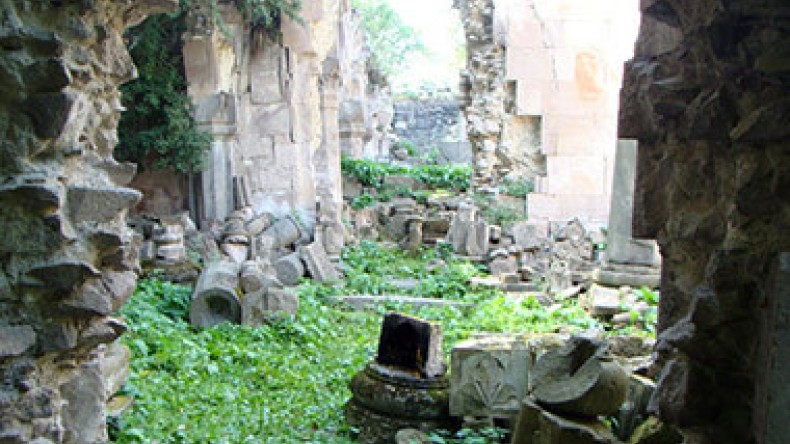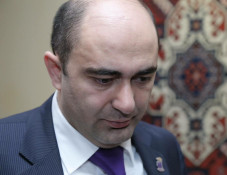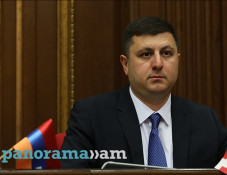
Bardzrakash St. Gregory Monastery participates in 2014 World Monuments Watch Day
The Foundation for the Preservation of Wildlife and Cultural Assets (FPWC), in cooperation with its General Partner VivaCell-MTS and the World Monuments Fund, participated in a World Monuments Watch Day event at the St. Gregory Church (Bardzrakash) in village Dsegh, Lori Province, Armenia, the press service of VivaCell-MTS reports.
Watch Day is a series of celebratory and educational events supported by World Monuments Fund (WMF) held at cultural heritage sites included in the 2014 World Monuments Watch. Thanks to the efforts of the FPWC, the Bardzrakash St. Gregory Monastery has been included in the 2014 World Monuments Watch.
Watch Day at the site consists of a cleanup, an event that will take place as part of the annual Earth Day campaign of cleanups and tree plantings organized by the FPWC. The goal of Watch Day is to reclaim the abandoned monastery as a public space, with the cleanup serving to increase the attractiveness of the site for the community and for tourists. The clean-up activities were implemented by groups of volunteers from various organizations and individuals, including VivaCell-MTS.
The complex is on the 2014 World Monuments Watch because of years of neglect and need for an increased awareness of its significance. WMF President Bonnie Burnham stated: “Watch Day is an opportunity for communities around the world to engage with sites on the World Monuments Watch in their midst. We are happy to be able to support the activities undertaken at these events and hope they foster a greater appreciation for these important places.”
Bardzrakash St. Gregory Monastery is a former religious complex in northern Armenia dedicated to St. Gregory the Illuminator, the first leader of the Armenian Church and patron saint of the Armenian people. The complex contains two churches and other remains, including numerous khachkars, or memorial stele, usually carved with the symbol of the cross. The stone structures survive in ruins, with no roofs. While it is not easy to date the complex, many think that it was created in the tenth century, and there are several inscriptions on the site from the period of Zakarid rule in the early thirteenth century. The last inscription dates from 1247, and it is likely that the monastery was abandoned as the Mongols swept through Armenia and destroyed the existing social order.
The site, now heavily overgrown by vegetation, is located on the edge of a deep canyon and is only accessible on foot, leading to an exciting sense of discovery for the visitor. Increasing local awareness of the significance of the historic monastery complex and its potential as a heritage destination represents the first step toward creating protection measures for Bardzrakash St. Gregory Monastery and engaging stakeholders in its preservation.
Newsfeed
Videos






























